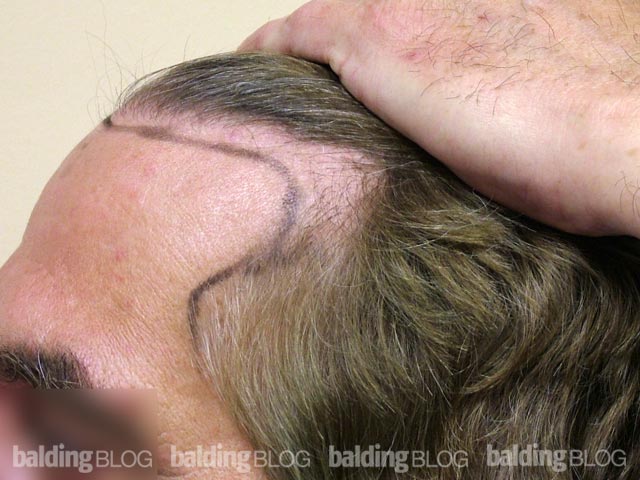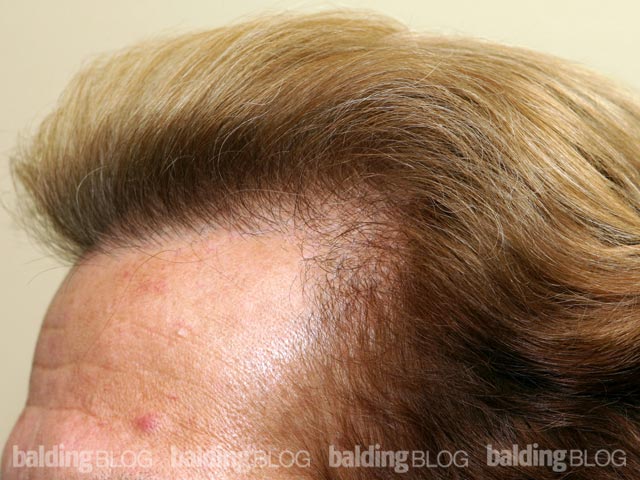1. Is initial shedding experienced with minoxidil the same as loss due to trauma? That is, does the initial shedding often experienced from a topical solution represent permanent loss (like loss from surgery or medications), or is it simply the start of a new hair cycle, with potentially thicker hairs growing back. Or is this the same as traumatized hair that, once it falls out, regrows weaker and smaller? I ask because I began adding liquid Rogaine on weekends in addition to the foam during the week (it is just too greasy otherwise), and I am hoping that maybe some of the most recent loss might have been caused by the liquid formulation.
Minoxidil is known to cause shedding in the initial use. It is not comparable to trauma. The hair should come back and start reversing from the short term loss within 2 or so months.
2. We discussed formula 82M. So, in addition to 5% minoxidil, it contains retinoic acid, tretinoin, 0.01% topical steroid fluocinolone, and oleanolic acid. I am just curious if you would expect to see any real difference in response to treatment between 82M as opposed to Rogaine. I have not felt any irritation from the 82M upon application, but my scalp has become extremely dry with a tremendous amount of skin flaking (when I wake up in the morning, my pillow looks like it has been sprinkled with confectioner’s sugar). I never had a problem with scalp irritation from either liquid or foam Rogaine. If there is no reason to expect different results from 82M versus regular minoxidil, I do not know that it will be worth using in the long run.
The various acids in the 82M or other similar medications generally cause the scalp irritation, dryness and flaking. The basic theory behind the extra ingredients is to irritate the skin to absorb the minoxidil better.
3. Many doctors promote PRP treatment, and I know you remain fairly skeptical without good clinical evidence, but have you actually seen positive results in any patients anywhere? Is it a hit-or-miss type of treatment, where some people respond and some do not, or is it purely nonsense?
PRP has not shown any value. This came up at the recent international meeting for hair restoration surgeons and after review, it was my conclusion from that meeting (as well as many of the respected doctors who where there) that PRP has little value, if any in the various balding or hair transplant scenarios.
I have not seen positive results or met anyone who claimed positive results.
4. There are no solid studies regarding the effectiveness of LLLT on hair growth. Despite the question of efficacy of LLLT, I wonder if it is still possible to determine which device may be the best choice for the end user. I was considering trying a new laser, if only for better coverage and convenience of use, but is there any reason to think that the hair cap, for example, is any better than other laser products?
I have tried LLLT on patients over the years and I never saw any value and that is my belief. One doctor I respect, told the meeting that of the various devices, the Laser Hair Comb might be the best. I ask the best of what?


